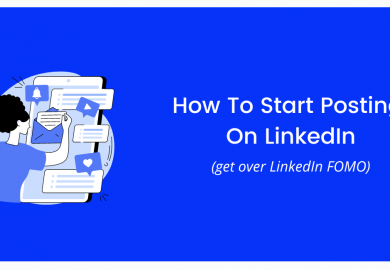My CEO Doesn’t Understand Marketing – What Do I Do?

If you have been hired as a marketing expert within a company, but your CEO still doesn’t particularly understand marketing or see the true value in it, don’t panic – you aren’t alone. This is more common than most people realise.
However, it might not be entirely their fault. In the space of a few years, we’ve gone from “content is king”, heat mapping to marketing automation, retargeting, AI and TikTok. That’s not to say that content marketing and social media scheduling platforms are no longer important – there’s just a lot of buzzwords to keep up with if marketing isn’t your forte.
According to a Forbes Insights survey, 69% of CEOs said they thought their companies waste money on marketing. So, how can you educate your CEO so that they see the true value in their internal marketing function?
Explain How Marketing And Sales Work Together
First of all, you need to ensure that they understand that marketing and sales go hand in hand. It’s not a competition between the two functions, it’s a long-term relationship.
If you want the easy option, email our blog on the benefits of sales and marketing alignment to them and see what they say. Alternatively, you could give them examples of why marketing and sales, in your business specifically, go hand in hand.
There are usually two main issues when it comes to CEOs understanding the relationship between marketing and sales. These are:
- They think that sales are more important than marketing.
- They think that marketing can replace sales.
The problem is that they aren’t grasping one key point – no business should have one without the other. It’s not a choose one and lose one situation. Marketing and sales go hand in hand, supporting one another and maximising lead generation, brand awareness, improving your reach and increasing sales – to name just a few top-level benefits.
If your CEO or MD thinks sales is more important than marketing, give them examples of how marketing can actually increase and improve sales figures. Show them the data. If they have hard proof that PPC campaigns, for example, have brought in more leads which have resulted in sales, they will be able to see that marketing is just as important as the sales function within the business.
However, if they are under the impression that marketing can replace sales, inform them that this also is not the case. Your marketing team is there to support the sales function, and unless you’re an e-commerce company with a “buy it now” option, marketing and sales should be working together.
Get Rid Of All Marketing Jargon
It may make you sound like you know what you’re talking about, but it may also mean your CEO is switching off when you go into depth about marketing tools and strategies. Our advice is to keep it simple. To begin with, when you’re explaining something marketing-related, it may be worth replacing specific terminology with broader terms that they will understand.
For example:
- Instead of TikTok and Reels, talk about “social media marketing” or “videos on social media”
- Instead of alt text, header tags and metadata, talk about “technical SEO”
- Instead of discussing RankBrain being a part of Hummingbird, refer to “Google algorithms”
- Instead of using abbreviations such as UI and UX, explain the difference between the user interface and the user experience
- Instead of talking about SendinBlue, Marketo and Force24, refer to “marketing automation platforms”
Marketers tend to store an endless amount of marketing terminology in their minds that build up over time, with no real sign of any limit. However, no matter how much sense each of these buzzwords may mean to a marketer, it’s highly likely that you will explain one complex marketing term to a CEO and then it’s forgotten a week later. That’s why it’s best to use broader blanket terms, in order for the information to stick.
Demonstrate The Value Of A Good Website
No matter what industry you work in, your website is possibly your most important marketing asset. (If it’s not the number one most important marketing asset, it’s definitely in the top three.)
We’ve seen it all before – CEOs and MDs will spend a fortune on travelling overseas to conferences, taking clients out to expensive dinners, paying for incentivised company holidays and repainting the office twice a year. But, for some reason, they refuse to update your company website, even though it’s over five years old. Why? Because they still don’t see marketing investment as a priority.
The problem is, without having an updated website, it can be difficult to properly demonstrate to them why a new version would be better. The best way to grab their attention is to talk about the numerous benefits of a new website, and of course, refer back to the ROI as often as possible.
Don’t forget to mention:
- Increased visitors - with an updated website comes improved tech SEO and a better content strategy, which will bring in more visitors, thus increasing your chances of more leads.
- More conversions - when a website is designed properly and the functionality has improved, conversions will increase simply by the ease of a simpler contact form, or a better CTA on the homepage.
- Customer retention - if your clients and customers are still seeing the same old website that they’ve seen since they started working with you, but one of your competitors approaches them and their website is more attractive and easier to use, you may start losing business.
Track, Analyse And Report Back
The most obvious one might be to show your CEO your marketing reports, to demonstrate the success of each part of your strategy. However, if you send them a 20-page spreadsheet every month, the likelihood of them understanding and valuing marketing may go down even more.
The trick is to make it clear and simple, but as effective as possible. You want the information you are sharing with them to be so impressive that they share it with the board of directors. This isn’t going to happen if you give them every minor detail, so make sure you pinpoint the important statistics.
Don’t show them absolutely everything you report on. Highlight five key points each month to explain marketing successes, and make it visually appealing. Graphs, tables and pie charts work for some people, whereas colour-coded bullet points might be more beneficial. Find out what resonates best with your CEO, and stick with that.
Make It Easier For Employees To Share Content
One thing CEOs may never understand is that asking employees and coworkers to share marketing content on social media does not mean that absolutely everyone is going to do it. It doesn’t matter if you send an email, followed by another email, followed by waiting for them to go to the kitchen for a coffee and you chasing them to ask if they’ve shared it yet.
It doesn’t matter if it’s a video, a blog, a company news article or otherwise, it’s almost impossible to get all employees involved if all you are doing is simply asking them.
Recent Posts
Categories
Check this out
2023 updates and tips to get the maximum reach of your posts
Passive Aggressive Marketing T-Shirts, All For Charity
Learn how a startup is tackling marketing
Featured Posts
Resilience and risk-taking in recruitment: a conversation with Will Pearce
Paiger acquires The Lonely Marketers
The power of the personal brand in recruitment
Archives
- September 2023
- June 2023
- May 2023
- April 2023
- March 2023
- February 2023
- January 2023
- December 2022
- November 2022
- October 2022
- September 2022
- August 2022
- July 2022
- June 2022
- May 2022
- April 2022
- March 2022
- February 2022
- January 2022
- December 2021
- November 2021
- October 2021
- September 2021
- August 2021
- July 2021
- June 2021
- May 2021
- April 2021
- March 2021
- February 2021
- January 2021
- December 2020
- November 2020









